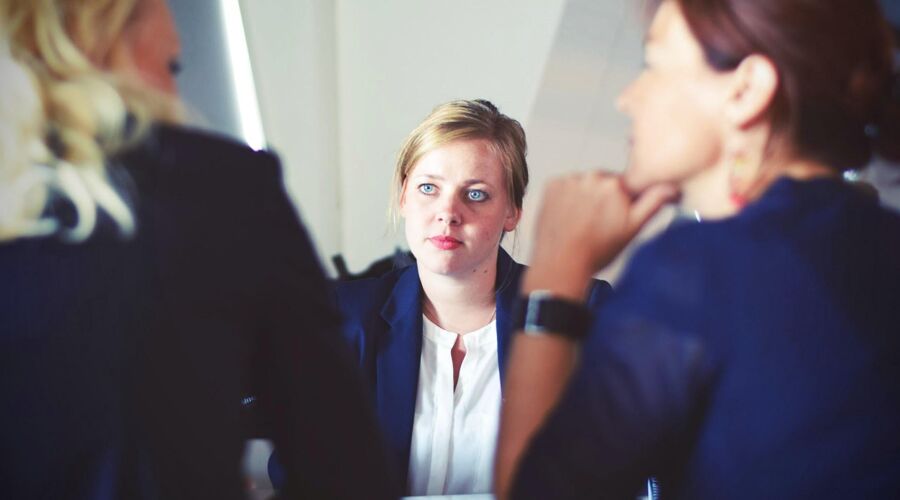
Today, 8th March is International Women’s Day, so I thought I’d write a blog for you about how women’s lives are put in danger every day due to the world being designed with only men in mind.
I recently read an article by feminist campaigner Caroline Criado-Perez in the Guardian and it really brought it home to me, how shockingly patriarchal the world of work still is! She mentioned some very interesting things that I have never really thought about and I’m sure you are the same.
Firstly, did you know that office temperatures are set at a point that is comfortable for an average man, but a woman’s metabolic rate is as low as 35% lower, this means that offices can be around 5 degrees colder than what is comfortable for a woman? No wonder we all have to wear layers while our male colleagues are happily walking around in their shorts and t-shirts.
Another more serious issue is that although workplace injuries have been decreasing over the years, there is evidence to show that they are decreasing for men, but actually increasing for women. This, according to Caroline is due to the gender data gap. Occupational research has been focused on male-dominated industries for too long without any thought what injuries and illnesses could be affect women in their work.
One area that has become increasingly worrying is that of occupational cancers. A study in 2003 by Zahm and Blair found that estimates that only 1% of female cancers are occupational was based on research carried out on men in the 1970’s! How can that really give us the truth? In 2012 HSE commissioned a study to find the burden of occupational cancer in the UK and found that it is actually around 2.3% for women, however we always have to be mindful that if someone contracts cancer and dies after the age of 75 then their previous occupations are not even considered as being a cause their death will not be counted in occupational cancer death statistics. According to Cancer research UK, 54% of cancer deaths are people over 75 so this means that many deaths, particularly those from mesothelioma (caused by asbestos exposure) may not be recorded the HSE’s statistics due to their long latency.
When workplace chemical exposure limits are set, there is not a separate figure for males and females or any consideration of a person’s age. Therefore for a woman in her 60’s who works as a cleaner, it is likely that the exposure will cause her more harm than a man in his 30’s. On top of this, there is the added exposure at home, as women are more likely to clean at home, they could be getting double exposure to carcinogens from cleaning chemicals. Occupational breast cancer is one of the cancers on the rise, years of a lack of research into occupational cancers that affect women mean that data for the causes of this rise are severely lacking.
Women have different hormones which can be affected by certain chemicals called endocrine disrupters. Chemicals are also more readily absorbed through our skin, due to it being slightly thinner and as we have a higher percentage of fat cells the chemicals can be stored in our bodies more readily. A campaign group called From Pink to Prevention call for there to be more of a focus on prevention rather than just looking for treatments and cures. As well as occupation being a factor for women, scarily, there are also harmful chemicals in most of our make-up, perfumes, shampoos and body lotions. Not enough research has been done yet to find the cumulative effect of all these separate exposures.
When it comes to Personal Protection Equipment (PPE) for women, Employers need to see the importance of ensuring that it fits women workers properly. Again, PPE is designed for male workers but often labelled as unisex, this is particularly common in jobs traditionally carried out by men. The reason for PPE is to protect you from whatever hazard has been identified, but obviously if the PPE doesn’t fit correctly then it probably isn’t giving you the correct level of protection to the standard required. For example, if your hard hat doesn’t fit properly, it could impair your vision, compromise balance and increase the risk of trips and slips if one hand needs to be used to hold on to your hat! If gloves are too big, how can you be expected to carry out tasks efficiently, likewise if your boots are too big, again the likelihood of slips and trips will be increase as climbing ladder could be extremely dangerous if your boots are much bigger than your actual feet.

We have a long way to go before workplaces are as safe for women as they are for men currently. In most cases, it has just been accepted that things are measured in this way, these are the sizes you can buy, this is the amount we use, etc etc and it has just not been challenged. Times have changed, we need to demand that things change, that we are protected to the same degree as men in our workplaces. This is just at work, don’t get me started on the rest of our day to day lives! Caroline Creda – Perez’s book – Invisible Women: Exposing Data Bias in a World Designed by Men, goes into more detail about all aspects of our lives from vehicle safety to inequality around the amount of toilets in public places. Her book was released on 7th March just in time for International Women’s Day.
For more information about women’s health and safety, we have a guide on women’s health and safety at work, if you haven’t seen it, take a look here
Lynsey Mann
GMB National Health, Safety and Environment Officer
Lynsey.mann@gmb.org.uk


